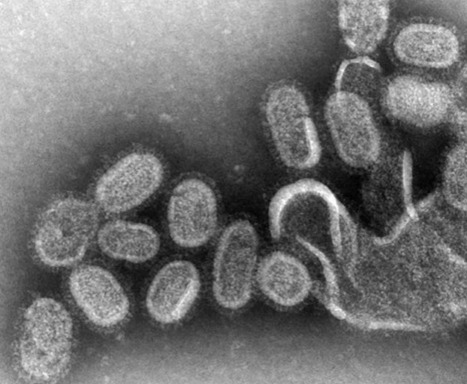Current virus detection methods often take significant time or can be limited in sensitivity and specificity. The increasing frequency and magnitude of viral outbreaks in recent decades has resulted in an urgent need for diagnostic methods that are facile, sensitive, rapid and inexpensive. Here, we describe and characterise a novel, calcium-mediated interaction of the surface of enveloped viruses with DNA, that can be used for the functionalisation of intact virus particles via chemical groups attached to the DNA.
Using DNA modified with fluorophores, we have demonstrated the rapid and sensitive labelling and detection of influenza and other viruses using single-particle tracking and particle-size determination. With this method, we have detected clinical isolates of influenza in just one minute, significantly faster than existing rapid diagnostic tests. This powerful technique is easily extendable to a wide range of other enveloped pathogenic viruses and holds significant promise as a future diagnostic tool.
Compared with antibody staining of virus particles, the calcium labelling method is significantly faster, doesn’t necessitate sample preparation, requires cheaper reagents, and can be combined with alternative detection methods should specific identification of virus particles be required. Thus, we envisage that our assay has potential as a standalone technique, for example, as a rapid way of immobilizing and visualizing virus particles at the same time, by using biotinylated fluorescent DNA to pull down virus particles onto a microscope slide for observation. However, a further major advantage of the method is its compatibility with other techniques, such as existing virus purification or quantification assays. The method could feasibly be used as a rapid initial test to confirm the presence of a virus in a sample, which could then be followed up using antibody-specific labelling or RT-PCR if virus was detected.
Published in Nature Scientific Reports (November 7, 2019):
https://doi.org/10.1038/s41598-019-52759-5



 Your new post is loading...
Your new post is loading...







